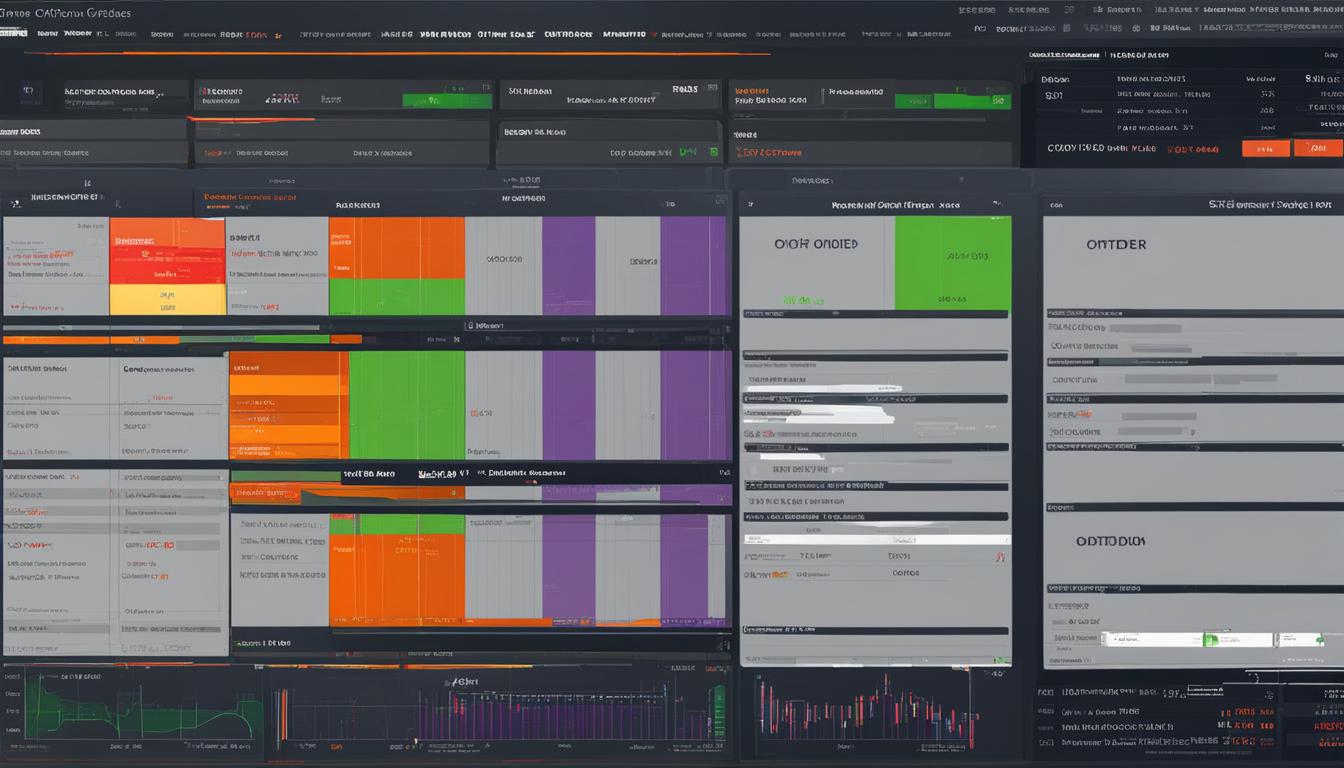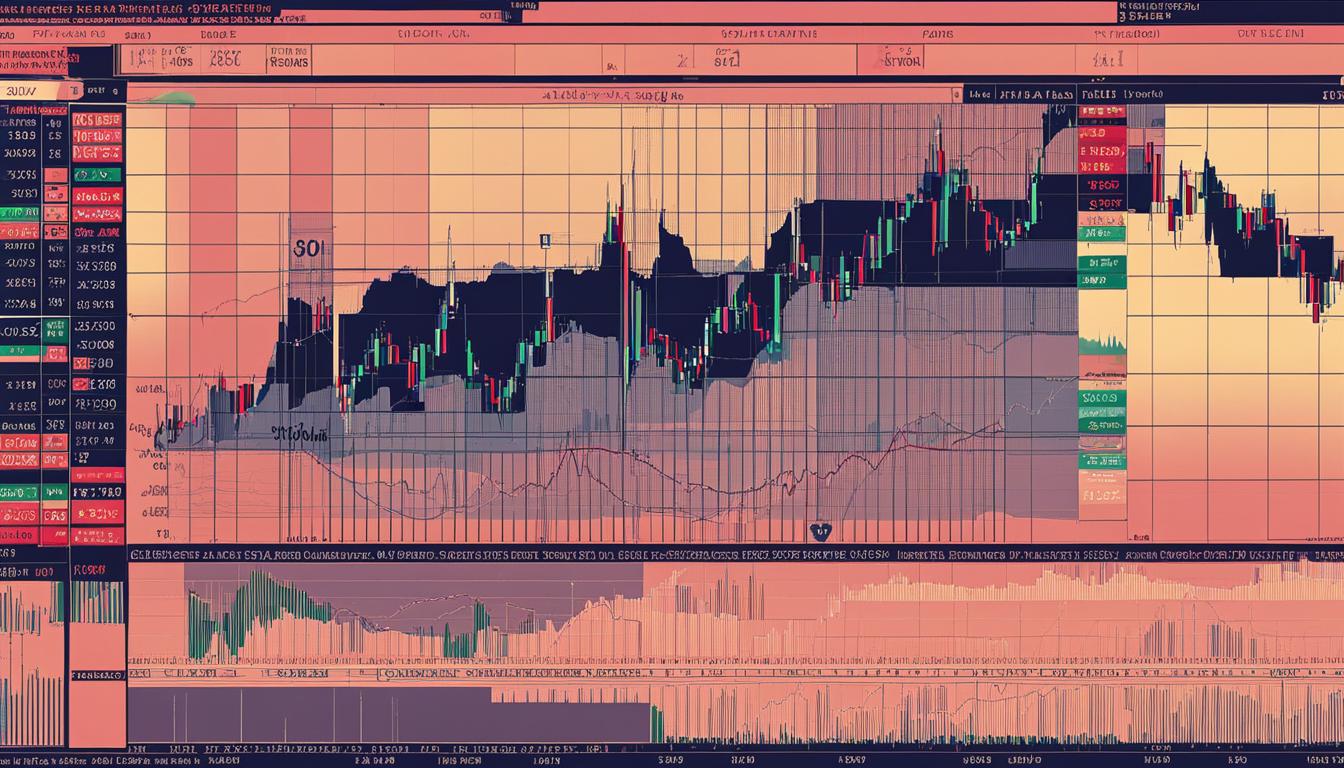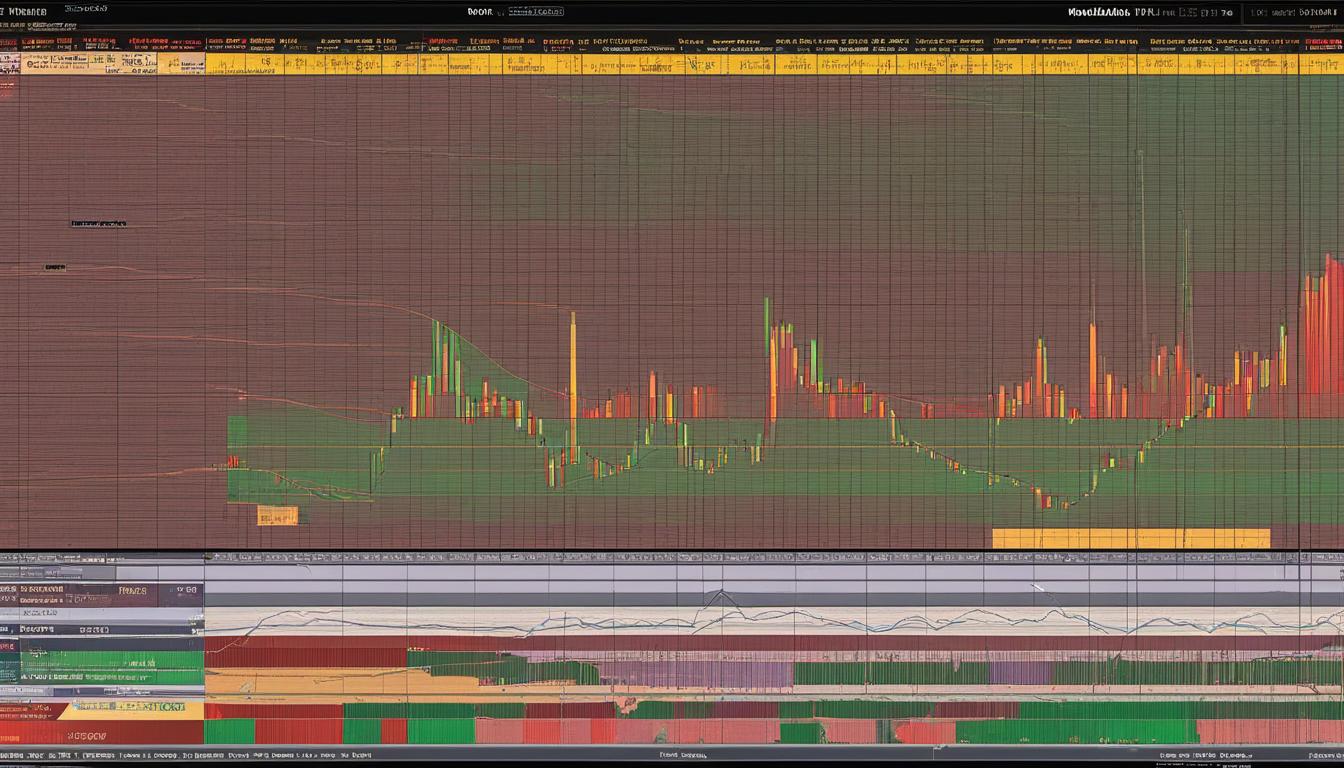Is the Gold Standard Making a Comeback? Predictions and Insights

Introduction
The gold standard is a monetary system where a country’s currency or paper money has a value directly linked to gold. Under this system, governments agreed to convert currency into a specific amount of gold, allowing for fixed exchange rates between national currencies. The goal of this system was to provide stability in prices over the long term and promote international trade by reducing the risks associated with currency fluctuations.
Fiat currency, on the other hand, is not backed by physical commodities like gold or silver. It has become the main form of money since most countries abandoned the gold standard in the 20th century. The shift towards fiat currency allowed for more flexibility in monetary policy but also sparked debates about inflation and economic stability.
In this article, we will explore the definition, history, and potential resurgence of the gold standard as a monetary system. We’ll discuss its advantages and disadvantages, helping you understand whether it could be a viable option in today’s economy.
Understanding the Gold Standard as a Commodity-Based Monetary Regime
The gold standard is a commodity-based monetary regime where a country’s currency is directly tied to a specific amount of gold. This ensures that the currency can be exchanged for a fixed quantity of gold, promoting stability and confidence in the monetary system.
Core Principles of the Gold Standard
- Fixed Value: The currency has a set value in terms of gold. For instance, if one ounce of gold is valued at $35, then $35 can always be exchanged for one ounce of gold.
- Convertibility: Individuals and businesses can convert currency to gold and vice versa, which underpins trust in the currency’s value.
- International Trade: Countries adhering to the gold standard could easily trade with each other since their currencies were all pegged to gold, simplifying exchange rates.
How Countries Pegged Their Currencies to Gold
To adopt this system, countries held substantial gold reserves and issued paper money equivalent to these reserves. Central banks were responsible for maintaining this ratio, which meant:
- Gold Reserves: Governments had to keep sufficient gold reserves to back their currency issuance, preventing excessive printing of money.
- Exchange Rates: Fixed exchange rates between currencies were established based on their respective values in gold. This could affect trade balances and economic relations when one country’s currency was stronger.
- Role of Special Drawing Rights (SDRs): In modern times, international organizations like the IMF have used Special Drawing Rights (SDRs) as a supplementary reserve asset alongside gold, providing liquidity and stability to the global monetary system.
A Brief History of the Gold Standard
The gold standard system has roots going back to ancient civilizations, where gold was used as a medium of exchange due to its intrinsic value and durability. During the 19th century, the gold standard became more formalized and widespread.
Origins and Development
Early Use
Ancient societies like Egypt and Rome utilized gold coins for trade.
Formal Adoption
By the early 1800s, countries began to adopt the gold standard formally. The UK led the charge in 1821, establishing a system where currency was directly linked to a specific amount of gold.
Notable Countries
- United States: The U.S. adopted the gold standard in 1879, pegging the dollar to gold at a fixed rate. This move aimed to stabilize the economy and foster international trade.
- Great Britain: As an early adopter, Great Britain’s establishment of the gold standard set a precedent that many other nations followed. This alignment facilitated smoother international transactions.
The interconnectedness of economies adhering to this standard created an era where global trade could flourish under predictable monetary conditions.
The implementation of these monetary systems, however, had far-reaching implications for financial markets. For instance, options trading underwent significant changes over the last decades, reshaping the landscape through key trends and shifts in the US market[^1^]. Understanding this evolution is crucial to comprehend how financial systems have transformed.
Moreover, within these historical frameworks, it is essential to understand the consequences of decreasing implied volatility on investment strategies[^2^]. Managing risks and maximizing returns in a volatile market necessitate unearthing strategies that can thrive even when faced with declining implied volatility.
The evolution of these monetary systems highlights how significant shifts in economic policies can shape markets globally.
[^1^]: How Options Trading Changed [^2^]: Decreasing Implied VolatilityAdvantages and Disadvantages of Tying Currency to Gold
Pros of the Gold Standard
1. Price Stability and Disciplined Monetary Policies
The gold standard is well-regarded for its ability to facilitate price stability. By pegging the value of currency to a fixed amount of gold, governments can limit excessive fluctuations in currency value. This fosters an environment of predictability in prices, which is beneficial for both consumers and businesses.
When currencies are tied to gold, central banks are compelled to adhere to more disciplined monetary policies. They cannot freely print money, reducing the likelihood of reckless fiscal practices that lead to hyperinflation.
2. Control Over Inflation and Deflation
Inflation control is another significant advantage under the gold standard. Since currency supply is directly linked to a fixed asset—gold—it restricts the ability of governments to inflate the money supply arbitrarily. This constraint effectively limits inflationary pressures, maintaining the purchasing power of the currency over time.
On the flip side, this system also helps in managing deflationary cycles. By maintaining a stable value for currency, it curtails sharp drops in prices that can lead to economic stagnation or recessions. This balanced approach provides a buffer against extreme economic conditions, promoting long-term economic stability.
Cons of the Gold Standard
1. Vulnerability to Financial Panics
One major drawback of the gold standard lies in its inherent vulnerability to financial panics. During periods of economic uncertainty or crises, the demand for gold-backed currency can surge abruptly, draining national reserves and causing widespread panic. This rigidity makes it difficult for economies to respond flexibly in times of financial stress.
2. Lack of Economic Flexibility
A rigid gold-backed system also results in limited discretion for governments and central banks when responding to changing economic conditions. Unlike fiat currency systems, where monetary policy can be adjusted dynamically through mechanisms like interest rate changes or quantitative easing, a gold-backed system offers little room for such maneuverability.
The inflexibility can hinder efforts to stimulate economic growth during downturns or control overheating during booms. For instance, during a severe recession, a country operating under the gold standard may struggle to inject liquidity into the economy quickly due to its limited gold reserves.
For those interested in diving deeper into financial trading techniques that could complement your understanding of market dynamics beyond traditional monetary policies, you might find resources like Mastering Momentum Trading or Unlocking RSI Indicator Secrets particularly useful. These guides provide valuable insights into trading strategies that can enhance your understanding of market dynamics.
Additionally, if you want to explore the realm of options trading and understand various components of an option quote, resources like What Are Options Quotes? can decode the intricacies for you. Understanding options quotes is crucial for anyone looking to venture into this field.
Balancing these pros and cons provides a nuanced view of why some advocate for elements of the gold standard while others caution against its potential drawbacks.
Cons of the Gold Standard
A gold-backed monetary system inherently carries certain disadvantages, largely stemming from its rigidity and limited flexibility. Key among these issues is the vulnerability to financial panics and economic recessions. Under a strict gold standard, the money supply is directly tied to the amount of gold held by a country. This inflexibility can exacerbate economic downturns, as there is no easy way to increase the money supply during times of crisis.
1. Financial Crises
History has shown that economies under the gold standard were more prone to severe financial crises. With a fixed money supply, banks had limited ability to respond to sudden withdrawals or panics, leading to increased financial instability.
2. Economic Flexibility
The gold standard also limits a government’s discretion in responding to changing economic conditions. For instance, modern economies rely on fiat currency systems that allow central banks to implement monetary policy adjustments swiftly. Such flexibility is crucial for managing inflation control and deflationary pressures effectively. A gold standard does not afford this level of responsiveness, making it difficult to adjust monetary policies in real-time.
The inherent lack of adaptability within a gold standard regime often results in prolonged periods of economic distress and limits the tools available for stabilizing an economy during turbulent times. For example, during the Great Depression, countries adhering strictly to the gold standard faced deeper and longer-lasting economic hardship compared to those that abandoned it earlier. This historical precedent underscores the challenges associated with maintaining a rigid gold-backed system in the face of dynamic global markets.
“Moreover, understanding what is a put option can shed light on how financial mechanisms beyond traditional gold-backed systems can provide strategic tools for investors in mitigating risks during economic downturns.”
The Gold Standard vs. Fiat Currency: Examining Two Monetary Paradigms
Differences in Nature and Functioning
The gold standard and fiat currency systems differ fundamentally in their structure and operation:
Gold Standard
- Currency value is directly linked to a specific amount of gold.
- Governments set a fixed price for gold and maintain currency values accordingly.
- Central banks have limited discretion in monetary policy adjustments.
Fiat Currency
- Value is derived from government decree with no intrinsic value.
- Currency values fluctuate based on market dynamics.
- Central banks can adjust monetary policies to respond to economic conditions.
Impact on International Trade and Economic Stability
The nature of these systems has significant implications for international trade and economic stability:
- Gold Standard: Under the gold standard, currency stability facilitated predictable exchange rates, making international trade more straightforward. However, this rigidity often led to financial panics during periods of economic stress due to limited monetary policy flexibility.
- Fiat Currency: In contrast, fiat currencies offer greater flexibility, allowing governments to manage economic cycles more effectively. This adaptability can mitigate recessions but may lead to inflation if not managed prudently.
For additional insights into how financial markets operate under different systems, you might find resources like those offered by FXOptions highly informative. They delve deeper into the intricacies of financial mechanisms that underpin modern economies, including topics such as Options Exchanges, which explore who they are and how they operate within American financial markets. Additionally, they provide explanations about exercising options which can help you better understand the phrase “exercise option meaning” in financial parlance and how it impacts your daily life.
Current Perspectives on the Relevance of the Gold Standard
Modern perspectives on the gold standard vary widely among economists and financial experts. Contemporary economic thinking often critiques the rigidity and limitations of a gold-backed monetary system. However, some argue that elements of the gold standard could still provide substantial benefits if integrated thoughtfully into modern frameworks.
Evaluation in Light of Contemporary Economic Thinking
The gold standard is often evaluated against today’s economic needs and challenges. Critics highlight that it may not offer the flexibility required to manage complex global economies. The inability to adjust quickly to economic shocks or changes in money demand presents significant drawbacks. On the other hand, proponents suggest that certain aspects, like tying currency value to a tangible asset, could enhance monetary stability.
Key takeaway: While a full return to the gold standard appears unlikely, incremental adoption of its principles—such as maintaining disciplined monetary policies and controlling inflation—could be beneficial. This hybrid approach seeks to balance traditional stability with modern economic dynamism.
Incorporating Elements into Modern Monetary Frameworks
Incorporating elements of the gold standard into contemporary monetary systems involves innovative approaches. Some propose using digital currencies backed by physical assets like gold. This concept aims to combine the stability of commodity-based systems with the flexibility and efficiency of digital finance.
These discussions reflect a broader trend towards re-evaluating traditional monetary principles in light of today’s technological advancements and economic complexities.
Is the Gold Standard Feasible in the Digital Age?
Technological advancements have revolutionized financial systems, raising questions about the feasibility of reintroducing a physical asset like gold as the basis for a digitalized monetary system. Integrating gold into today’s digital era presents both challenges and opportunities.
Challenges
- Liquidity and Portability: Unlike digital currencies, gold is a physical asset that requires storage and security measures. Converting large quantities of gold into liquid assets quickly can be cumbersome.
- Transaction Speed: The speed at which transactions occur in digital currency markets far outpaces any system backed by physical commodities. Implementing gold-based transactions may slow down financial operations.
- Regulatory Complexity: Introducing gold into a modern digital framework necessitates robust regulatory mechanisms to ensure transparency, security, and compliance with international standards.
might shed some light on how to navigate this complexity effectively.
Opportunities
- Stability and Trust: Gold has historically been perceived as a stable store of value. Utilizing it in a digital economy could enhance trust among users wary of fiat currencies.
- Hybrid Models: Combining elements of the gold standard with digital technologies could create hybrid monetary systems that leverage the stability of gold while maintaining transactional efficiency. For instance, blockchain technology can facilitate secure and transparent transactions involving tokenized representations of gold.
Understanding the hidden power of open interest in option contracts would also be advantageous in exploring these hybrid models.
Evaluating these factors is crucial for understanding how a physical asset like gold could fit into our increasingly digital financial landscape.
Potential Implications for Industries in a Gold-Backed Economy
The return to a gold-backed economy would have significant implications across various sectors. Here’s a look at which industries might thrive and which may struggle under such a regime.
Sectors That May Thrive
- Luxury Goods: Items like jewelry, watches, and high-end consumer products often see increased demand during times of economic uncertainty. A gold-backed currency could stabilize purchasing power and potentially boost spending in luxury markets.
- Mining and Natural Resources: Companies involved in gold mining and other natural resource extraction could see increased interest and investment as the value of their output directly influences the monetary system.
- Financial Services: Banks and financial institutions that offer gold-based financial products might find new business opportunities. This includes services like gold-backed loans, savings accounts, and investment options.
Sectors That May Struggle
- Export-Dependent Industries: Exporters might face difficulties if the gold standard leads to stronger currencies, making exports less competitive on the global market.
- Tech and Innovation Sectors: These sectors often rely on flexible monetary policies to fund research and development. A rigid gold-backed system could limit available capital for innovation.
- Retail and Consumer Goods: These industries depend on consumer spending, which could be adversely affected by the limited monetary flexibility inherent in a gold standard system.
Understanding these impacts is crucial for industries looking to navigate a potential shift back to a gold-backed economy.
The Future of Money: Balancing Tradition and Innovation
Evaluating the possibility of a future with the gold standard reveals both promises and challenges. The notion of returning to a gold-backed monetary system brings with it the allure of stability and predictability. These are qualities often missed in today’s fiat currency regimes, which are subject to inflationary pressures and central bank interventions.
Alternative Monetary Arrangements
Cryptocurrencies and other digital assets have emerged as potential alternatives or complements to traditional monetary systems. They offer decentralized control and transparency, attributes that many find appealing in an era where trust in centralized financial authorities is waning. The conversation about incorporating elements of the gold standard into modern frameworks isn’t just academic; it’s driven by a genuine desire for monetary reform.
Encouraging Active Participation
Staying informed about ongoing debates in economics is crucial. Economists, policymakers, and laypeople alike must engage in discussions about the future of our monetary systems. This participatory approach ensures a diverse range of perspectives, leading to more robust solutions.
Several resources can aid in understanding these complex topics:
- FX Spot vs FX Options Trading: A Comparison offers insights into different trading mechanisms, which is relevant when considering alternative monetary arrangements.
- From the Past to the Future: Understanding Historical Volatility vs Implied Volatility delves into market trends and their implications, providing valuable information for those exploring new monetary frameworks.
- From Paper Trading to Real Money Trading: Testing Your Comfort Zone explores trading strategies, including those involving digital assets like cryptocurrencies.
- Avoid These Common Mistakes When Trading Options on Expiry Day highlights pitfalls to avoid in options trading, which is relevant when considering alternative monetary arrangements.
The interplay between traditional concepts like the gold standard and innovative ideas such as digital currencies will shape the monetary system’s future. By balancing these elements thoughtfully, we can strive for a more stable and inclusive financial landscape.
Encourage your peers to delve deeper into these topics, contribute their insights, and stay engaged with the evolving discussions around our monetary systems’ future.






